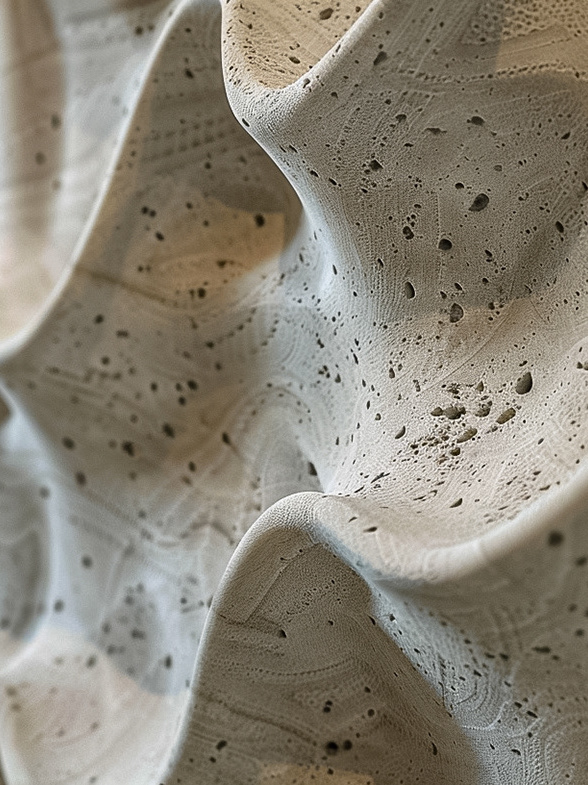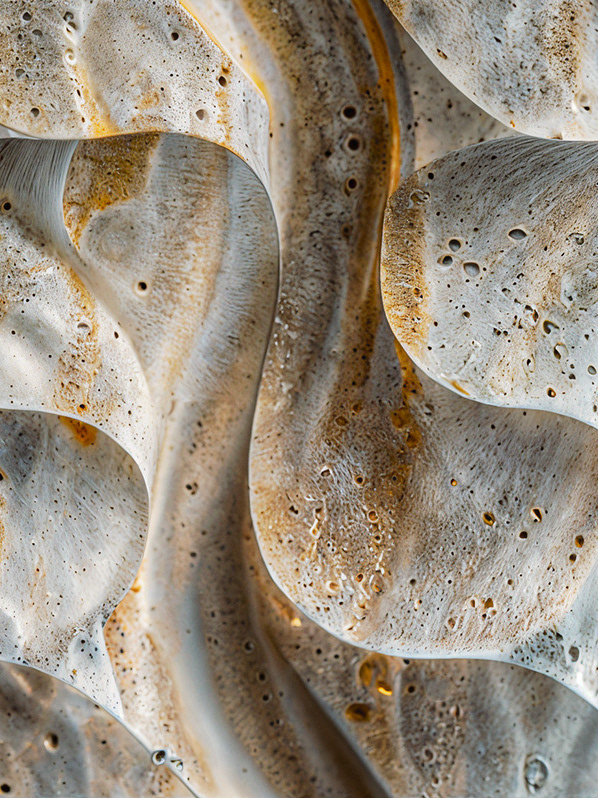Exploring innovative concrete patterns, envisioning cutting-edge layouts, and predicting spatial interactions: AI-powered design transforms how you approach interior spaces. By leveraging artificial intelligence, you can create personalized, functional, and harmonious environments tailored to specific needs. Imagine a design process where every element is optimized for both aesthetics and sustainability. But, how exactly does AI enable this level of precision and creativity? With the right AI platforms, designers and architects can truly push the boundaries of what's possible in concrete interior design.
Key Takeaways
- AI generates customized concrete interior designs, tailoring patterns and textures to user preferences.
- Advanced techniques like 3D printing and CNC milling create intricate and precise concrete patterns.
- Machine learning models analyze datasets to offer innovative and unique concrete design solutions.
- AI-driven platforms automate 3D modeling and structural analysis, streamlining the design process.
- AI tools enable real-time adjustments and collaboration, ensuring efficient and harmonious design outcomes.
Understanding AI in Design
Artificial intelligence (AI) in design transforms how you conceptualize and execute stunning concrete interiors with unparalleled precision and creativity. By leveraging AI, you can enhance every aspect of your design process, from initial ideation to the final touches. AI algorithms analyze vast datasets, offering you unique insights into materials, structural integrity, and aesthetic possibilities that human intuition might miss.
You'll find AI tools invaluable in generating design prototypes quickly, allowing you to visualize multiple concepts before committing to a final plan. These tools can also predict how different elements will interact within a space, ensuring harmony and functionality. Imagine a system that suggests best-suited lighting conditions, material combinations, and even air quality improvements—all tailored to your specific design needs.
Moreover, AI enhances your ability to personalize designs. By analyzing user preferences and lifestyle data, AI can help you craft interiors that aren't only visually stunning but also deeply resonant with individual tastes. You're no longer limited by traditional design constraints; AI opens up a world of infinite possibilities, making your concrete interiors not just innovative but also remarkably efficient and adaptive.
Ai generated short video of a modern Australian home
Innovative Concrete Patterns
In recent years, groundbreaking concrete designs have transformed interior design by offering a mix of aesthetic appeal and structural functionality. By utilizing advanced techniques such as 3D printing and CNC milling, you can now create intricate designs that were previously unattainable with traditional methods. These designs not only enhance the visual appeal of your spaces but also enhance durability and performance.
Patterned concrete provides a range of textures and finishes, from geometric patterns to natural shapes. Whether you're aiming for a contemporary, understated look or a more intricate, artistic style, the versatility is unmatched. You can achieve smooth shifts between floors, walls, and countertops, providing a unified, elegant look.
To ensure accuracy, advanced mold-making technologies can produce complex patterns with precise detail. These molds are reusable, reducing waste and guaranteeing consistency across various projects. Additionally, innovative concrete designs can be personalized to incorporate embedded lighting or even radiant heating, adding functionality without compromising the aesthetic.
When you're seeking to push the boundaries of design, innovative concrete designs offer practical solutions that are both state-of-the-art and sustainable. They offer you the chance to redefine spaces, making them both visually appealing and highly functional.
Using Ai for Concept Design
Leveraging advanced technologies for concrete patterns sets the stage for using AI in concept design, where machine learning algorithms can generate innovative and highly customized interior layouts. By integrating AI, you can rapidly iterate on design concepts, exploring a multitude of options that cater to specific aesthetic and functional requirements. This approach not only accelerates the design process but also guarantees a high degree of precision and creativity.
Machine learning models analyze vast datasets of previous designs and current trends to create layouts that are both unique and optimized for spatial efficiency. You can input parameters such as room dimensions, desired style, and functional needs, allowing the AI to generate several viable design alternatives. This empowers you to make informed decisions with a clearer vision of the final outcome.
Incorporating AI in concept design also allows for real-time adjustments. As your project evolves, the AI can adapt its recommendations, ensuring your design remains aligned with your goals. This dynamic approach provides the flexibility needed to craft interiors that aren't only visually stunning but also highly functional and personalized to your specific needs. By harnessing AI, you're elevating the potential of concrete interiors to new heights.
There are several website that can help with interior concept design using ai:
Spacely AI (https://www.spacely.ai/tools)
Spacely AI offers AI-powered interior design tools, including a space generator that can create unlimited space designs. It provides AI-driven solutions for various aspects of interior design, including walls. The platform allows users to customize their own style and generate design ideas, which could potentially include concrete wall panel concepts.
Collov AI (https://collov.ai)
Collov AI is described as "The Future of Interior Design With AI." It uses artificial intelligence to generate captivating design renderings in seconds, allowing users to personalize and revolutionize their spaces. This tool could potentially be used to conceptualize and visualize different wall panel designs as part of the overall interior design process.
REimagine Home (https://www.reimaginehome.ai)
REimagine Home is an AI-powered platform for interior design ideas, virtual staging, and redesigning furnished rooms. Its ability to generate personalized design concepts and inspiration for redesigning homes could include concrete wall panel designs as part of the overall interior transformation process.
Ai generated design concept of a 3d concrete wall panel
Practical Considerations for Choosing the Right Design
When selecting the ideal design for your concrete interiors, prioritize functionality and aesthetic harmony to guarantee the space meets both practical needs and visual aspirations. Start by evaluating the specific requirements of the area—consider factors like traffic flow, lighting, and acoustics.
Concrete's versatility allows for a wide range of finishes and textures, from polished surfaces to raw, industrial looks. Choose finishes that not only complement your design vision but also enhance durability and ease of maintenance.
Next, think about integration with existing systems, whether it's HVAC, plumbing, or electrical. Concrete can be seamlessly combined with various elements, but precise planning is essential to avoid future complications. Opt for designs that allow for flexibility, enabling easy updates and modifications as technology and tastes evolve.
Innovate by incorporating sustainable practices. Utilize recycled materials and advanced concrete mixtures that reduce carbon footprints. Smart sensors embedded in concrete can monitor structural integrity and environmental conditions, enhancing both safety and efficiency.
Conclusion
Ironically, while AI-powered design makes creating stunning concrete interiors look effortless, it's the intricate algorithms and precise data driving the magic.
You're not just choosing patterns; you're crafting personalized, sustainable spaces with unmatched accuracy.
Embrace this blend of innovation and practicality: it's your gateway to pushing design boundaries while ensuring every detail harmonizes perfectly.
So, isn't it amusing that the future of concrete interiors lies in the hands of invisible, yet incredibly precise AI?


